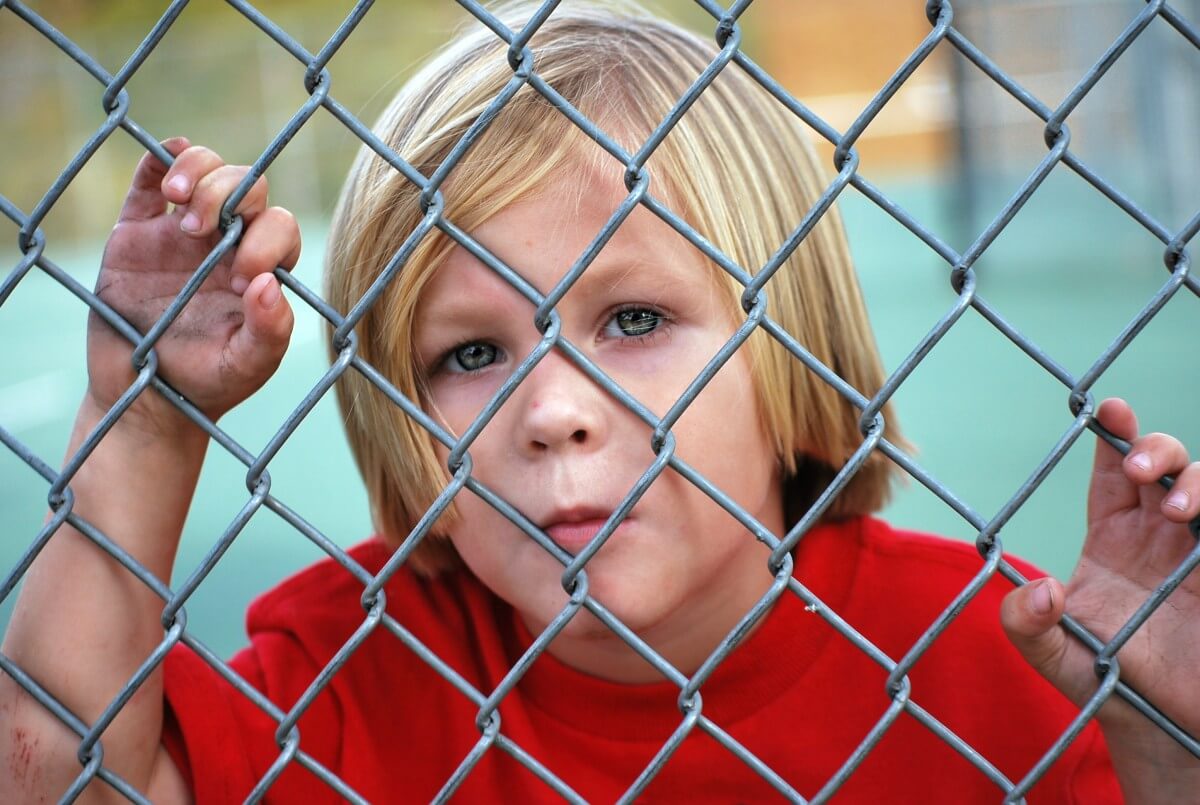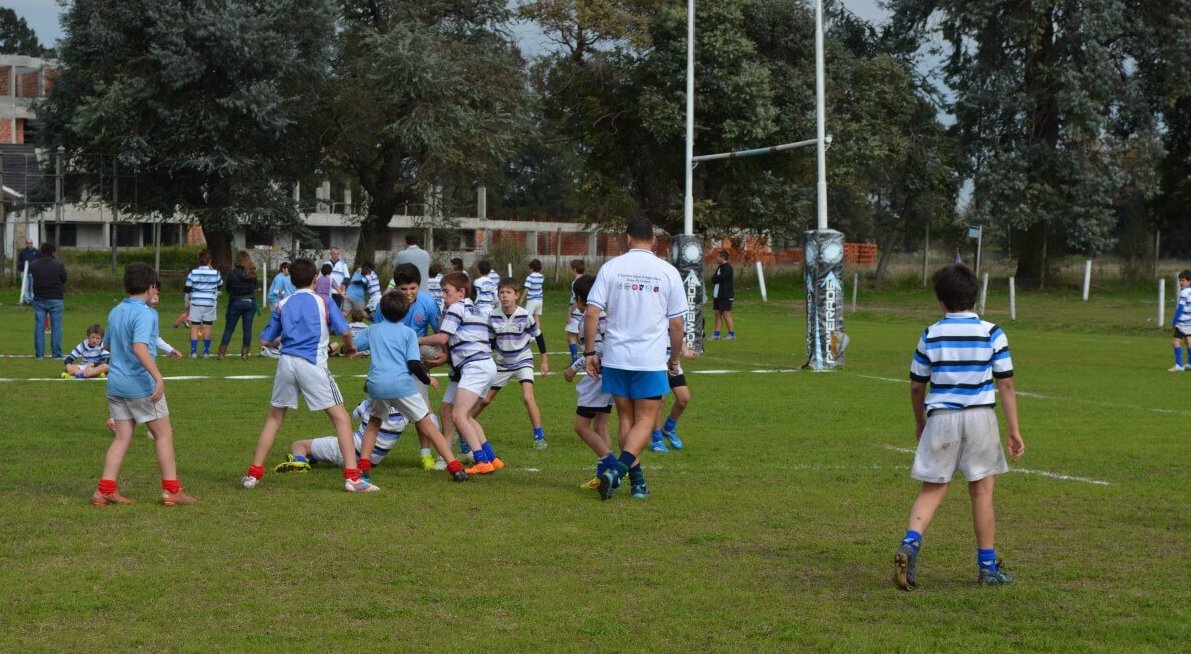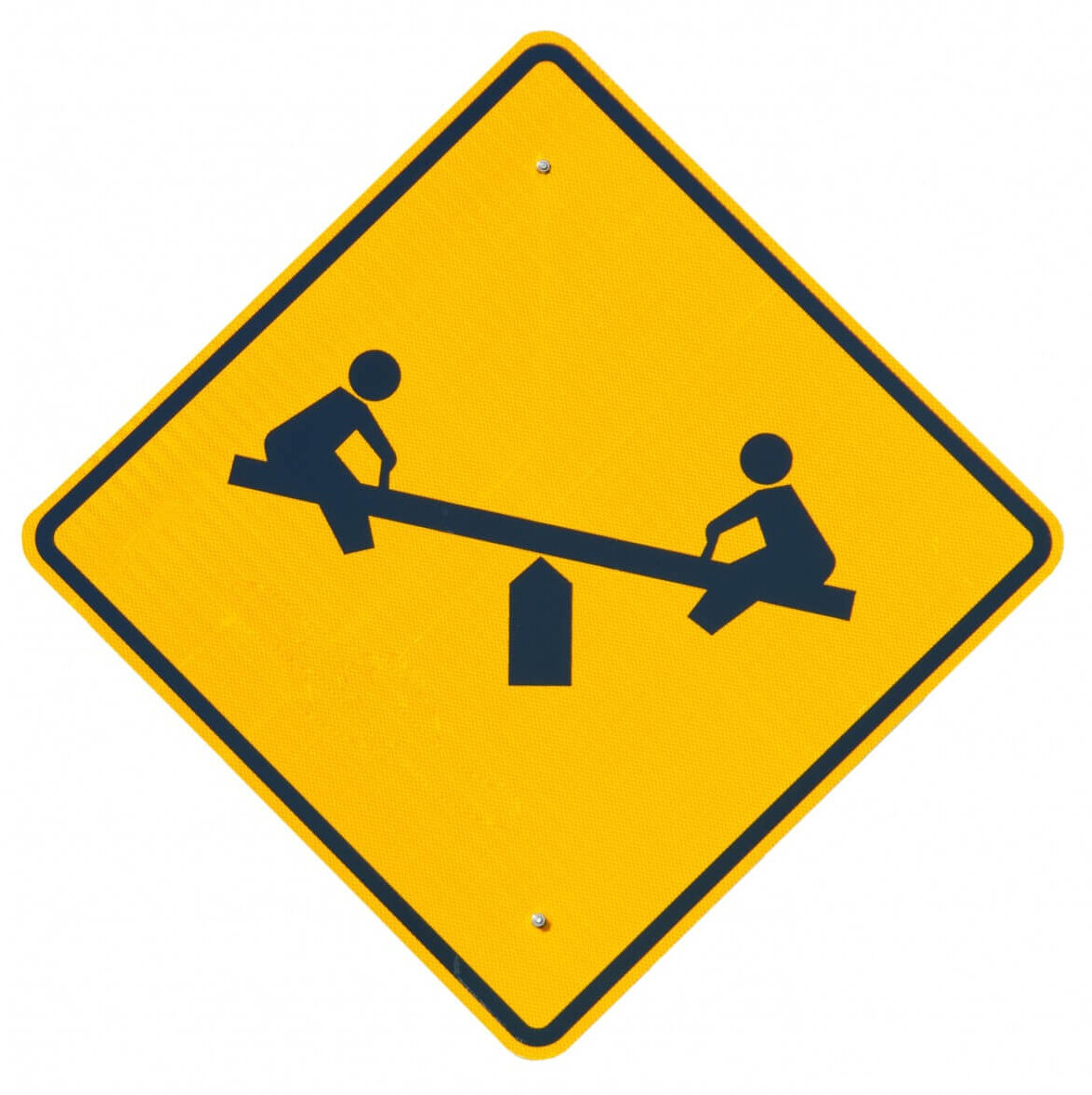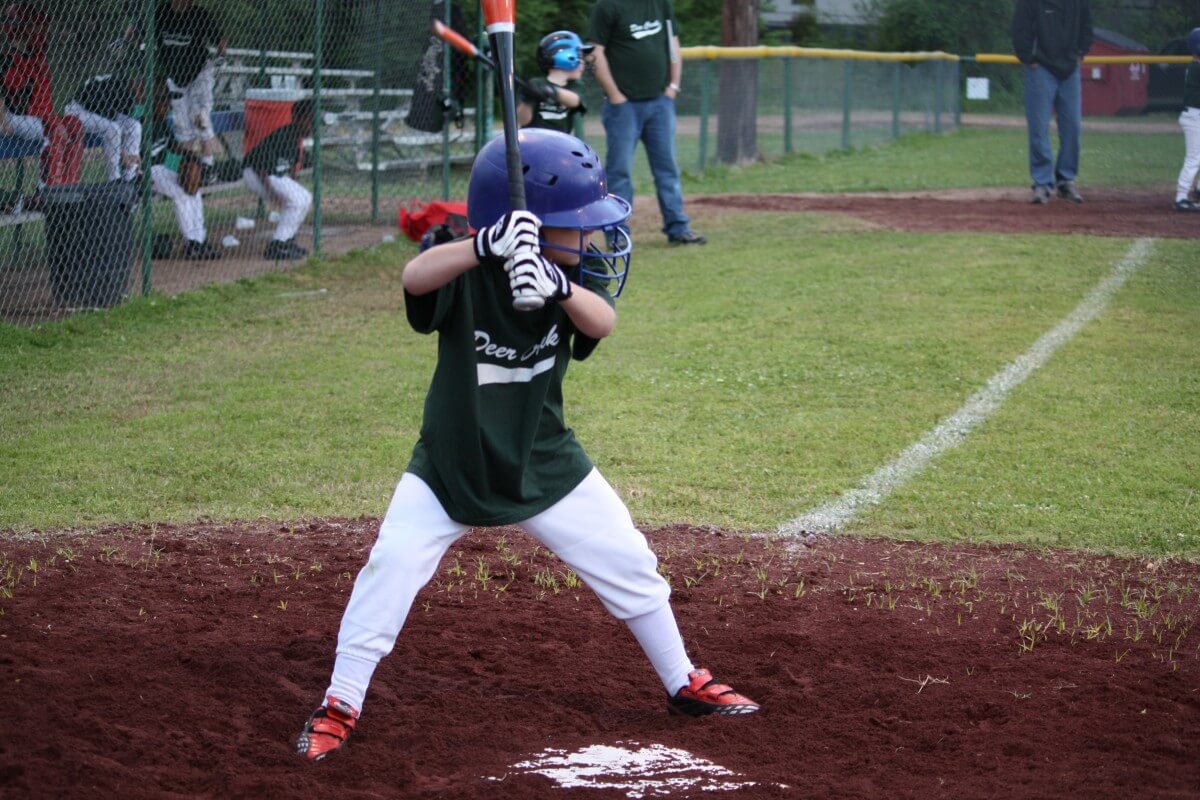
Research is clear, students with physical disabilities are excluded from physical education (Jespersen & McNamee, 2009; Martin, 2018). Thus, the purpose of this article is threefold: 1) to share a story of the best possibilities of attitudes and resources for students with physical disabilities, 2) to highlight the reality of what is happening in the schools, and 3) to provide a possible solution of perspective-taking for physical educators.
The Best Possible World
Let us start with a story. My name is Dr. Aubrey Shaw and when I was six months old my family and I were in a horrible car accident in Wyoming. From the collision with a double semi-truck, our car was smashed from both sides. Thankfully, no one lost their life that day, but I was surely close to losing mine. I was rushed to the hospital where they found a two-inch tear in my left temporal lobe. I was then airlifted to Denver Children’s Hospital where I underwent brain surgery and two months of a very long recovery. The doctors told my parents I would never walk or talk and was later diagnosed with semi-hemi paralysis due to a traumatic brain injury. After two months in the hospital, my family brought me home to be in a loving environment and daily intense therapy. I beat the doctors’ diagnoses. Moreover, when I turned five years old I was walking and talking and ready to go to preschool. I then began a nineteen-year journey with special services, therapy, and special education. My parents had the attitude and resources to help me be successful.

In 2004[1], I started seventh grade and met Mr. Bernard[2]. Mr. Bernard was my case manager for my Individualized Education Plan (IEP) and he was also an adaptive physical educator for the school. He, my parents, and the school administrators decided that I would be placed in Mr. Bernard’s adaptive physical education class. The adaptive physical education class was smaller in class size and the classroom was a smaller gymnasium. One day while walking to our class, we passed the general physical education class. I asked, “Why can’t I be with them?” He said, “Aubrey, look most of those kids are not playing” which was true as it was a very large class. Then he asked, “Do you want to play, or do you want to be with them?” I said, “Play!” with excitement. As a student in his class, he saw the potential in me to play for the Physically Impaired (PI) adaptive sports program for the district. Because of Mr. Bernard, I became a three-sport para-athlete for six years for my school district. Mr. Bernard had the attitude and resources for me to be successful. Growing up, I thought every child in the United States like me had these opportunities. I was soon to be proven wrong.

Reality
As the recovery and the therapy continued, I graduated high school and went to college. I graduated with my undergraduate degree in Psychology and decided that I wanted to go to graduate school to earn my master’s degree. Two years later, I earned my master’s degree in Movement and Leisure Sciences and was ready to begin a journey to earn a Ph.D. in Character Education and Leadership which I did four years later.
During my philosophy of sport class in graduate school, I wrote a paper on the power of play for individuals with physical disabilities and how the state of Idaho does not offer opportunities for this specific population. Interestingly, my major professor, Dr. Stoll read the paper and doubted the issue existed as we have laws to protect the rights of these individuals. Dr. Stoll is considered a leading authority in moral education intervention techniques for competitive adults and college-aged students in America. She has for over 40 years mentored 46 doctoral students as a professor at the University of Idaho.

As we concluded our meeting, she stated, “Aubrey you will have to prove to me that there is an issue” (Stoll, 2016). I asked her if she would be willing to study this with me. We formed a research team and began writing presentation proposals. Within a short span, we were accepted to present at a regional conference and then present at a national webinar. Since then, we have completed over twenty regional, national, and international presentations at conferences discussing the issue.
By participating in the conferences, we found reality quickly. Students with physical disabilities are not playing and they are being excluded from physical education classes (Shaw & Stoll, 2017; Shaw & Stoll, 2018; Shaw & Stoll, 2018b). The major issue which was stated over and over was that teachers do not know how to include these students (Shaw & Stoll, 2017; Shaw & Stoll, 2018; Shaw & Stoll, 2018; Shaw & Stoll, 2018b). In our presentations, we have been challenged by teachers who want action, not a discussion of theories. Often we heard, “I already know what the issue is. I came here for solutions” (Shaw & Stoll, 2017). Throughout our presentations, we gathered empirical data which supported our position and verified the original argument: students with physical disabilities are not included. But was that enough to make a case?

During the years of presenting, I took seventeen credits of special education, and interestingly at no time was exclusion in physical education discussed. In 2018, Dr. Stoll and I did a four-month readings study of disability sport, which verified the original argument (Jespersen & McNamee, 2009; Martin, 2018). The researchers clearly articulated why people with physical disabilities are excluded from physical education classes which included teacher attitudes, values, beliefs, level of competency, and educational preparation (Martin, 2018; Rizzo, 1984; Rizzo & Kirkendall, 1995).
Our own research plus the literature from two different lenses, special education and physical education supported our argument that people with physical disabilities are excluded and why they are excluded in physical education can be linked to resources and teacher attitude.
 Solutions
Solutions
Having the opportunity to engage in actual play in physical education for individuals with physical disabilities is bleak for various reasons. First, many states do not have the resources to support their population of people with physical disabilities. Second, pre-service teachers in many states only take one class in adaptive physical education. Third, the course curriculum in this one class is usually focused on inclusion law, The Rehabilitation Act of 1973, The Americans with Disabilities Act of 1990, and The Individuals with Disabilities Education Act of 2004, rather than offering solutions. The net results are pre-service teachers who neither have skills or attitudes to actually develop classroom inclusion strategies.
Skills are not our focus in this paper, rather we argue that attitudes are the key to inclusion for without the attitude to include, the result is exclusion through aides pushing children in wheelchairs around the gym, or children being perennial scorekeepers. Thus, a solution we propose is a series of reflective lessons where the pre-service teacher engages in perspective-taking. Perspective-taking as supported in the moral reasoning and moral development literature (Fox & DeMarco, 2001; Gibbs, 2014; Kohlberg, 1981; Lickona, 1991) is essentially placing yourself in another person’s shoes. However, the process takes time because it is not simple (Levinas, 2001). The result should end with a change in attitude.

The Process
Through a series of different ordered questions, the participants read, reflect, and write a response to the questions. These lessons create cognitive dissonance through three levels of reasoning. The first level is descriptive, the second level considers the why, and the third level places the reader into the scenario: what if you were this person? (Reimer, Paolitto, & Hersh, 1983).
In our research, we found that through intense lessons, attitudes were trending towards the inclusion of students with physical disabilities. Assessment of perspective-taking occurred through pre and post-test analyses of moral reasoning in a sport scenario, implicit bias, and judgments about inclusion. Teachers may not have control over the school resources, however, the perspective-taking lessons mitigated attitudes to see another’s perspective which is critical to inclusion.
 Bredahl (2009) argues that the inclusion of people with disabilities begins with an attitude and choice. If Bredahl is correct, and we believe she is, then the physical education teacher makes a choice every time they include or exclude. Perspective-taking asks difficult questions and forces a self-evaluation. For example, are we, as teachers, being honest when we do not give opportunities to people with physical impairments that we would want for ourselves? (Shaw, A. H., 2020). Do we have a moral duty to include? Are we biased towards people with physical disabilities? Answering these sorts of questions drives the process, and perspective taking[3] appears to improve attitudes to include.
Bredahl (2009) argues that the inclusion of people with disabilities begins with an attitude and choice. If Bredahl is correct, and we believe she is, then the physical education teacher makes a choice every time they include or exclude. Perspective-taking asks difficult questions and forces a self-evaluation. For example, are we, as teachers, being honest when we do not give opportunities to people with physical impairments that we would want for ourselves? (Shaw, A. H., 2020). Do we have a moral duty to include? Are we biased towards people with physical disabilities? Answering these sorts of questions drives the process, and perspective taking[3] appears to improve attitudes to include.
References
Bredahl, A.-M. (2009). Ethical aspects in research in adaptive physical activity. In E. Jespersen, & M. McNamee (Eds.), Ethics, Dis/ability, and Sport (pp. 171-184). New York: Routledge.
Fox, R. M., & DeMarco, J. P. (2001). Moral reasoning: A philosophic approach to applied ethics. Orlando, FL: Harcourt, Inc.
Gibbs, J. C. (2014). Moral development and reality. Oxford University Press.
Jespersen, E., & McNamee, M. (2009). Introduction: Philosophy, adapted physical activity and dis/ability. In E. Jespersen, & M. McNamee, Ethics, Dis/ability, and Sports. New York: Routledge.
Kohlberg, L. (1981). The philosophy of moral development: Moral stages and the idea of justice. Harper and Row.
Levinas, E. (2001). Is it righteous to be?: Interviews with Emmanuel Levinas. (J. Robbins, Ed.) Stanford University Press.
Lickona, T. (1991). Educating for character: How our schools can teach respect and responsibility. Bantam Books.
Martin, J. (2018). Handbook of disability sport and exercise psychology. Oxford.
Piper, T. R., Gentile, M. C., & Parks, S. D. (1993). Can ethics be taught? Perspectives, challenges, and approaches at Harvard Business School. Harvard Business School.
Reimer, J., Paolitto, D. P., & Hersh, R. H. (1983). Promoting moral growth: From Piaget to Kohlberg. Waveland Press.
Rizzo, T. L. (1984). Attitudes of physical educators toward teaching handicapped pupils. Adapted Physical Education Quarterly, 1, 267-274.
Rizzo, T. L., & Kirkendall, D. R. (1995). Teaching students with mild disabilities: What affects attitudes of future physical educators. Adapted Physical Activity Quarterly, 12, 205-216.
Shaw, A. H. (2020). An intervention for pre-service professionals to perspective take towards individuals with physical disabilities (Publication No. 28022464) [Doctoral dissertation, University of Idaho]. Proquest Dissertation and Theses Global.
Shaw, A. H., & Stoll, S. K. (2017, August 9). Disabilities, play, and possibilities. Reston, VA: Shape America.
Shaw, A. H., & Stoll, S. K. (2017, October 6). Tag you are it: Play in physical education with people who have disabilities. Lewiston, ID: SHAPE Idaho.
Shaw, A. H., & Stoll, S. K. (2018). Making play a positive inclusive experience for differently-abled students, athletes, and patients with disabilities. Journal of Sport Science, 6, 94-102.
Shaw, A. H., & Stoll, S. K. (2018, June 26). The laws exist but does inclusion? Boise, ID: Shape America Regional Conference.
Shaw, A. H., & Stoll, S. K. (2018b, October 11). The error in reasoning when using disability policy: “Go to legal- they will tell us what to do. Reno, NV: Western Society of Kinesiology and Wellness.
Stoll, S. K. (2016). Personal communications: Where the idea developed. Center for ETHICS*.
[1] We were no longer living in Wyoming but had moved to Minnesota in 1993.
[2] The name has been changed by authors to protect the identity.
[3] According, to moral development research the best way to flesh out perspective-taking is through asking reflective third order questions. We used qualitative measures along with quantitative measures to collect our data. Participants wrote and discussed their answers and we, as the researchers, examined the length of responses, the length of all the responses put together, and the quality of the responses (Piper, Gentile, & Parks, 1993).

